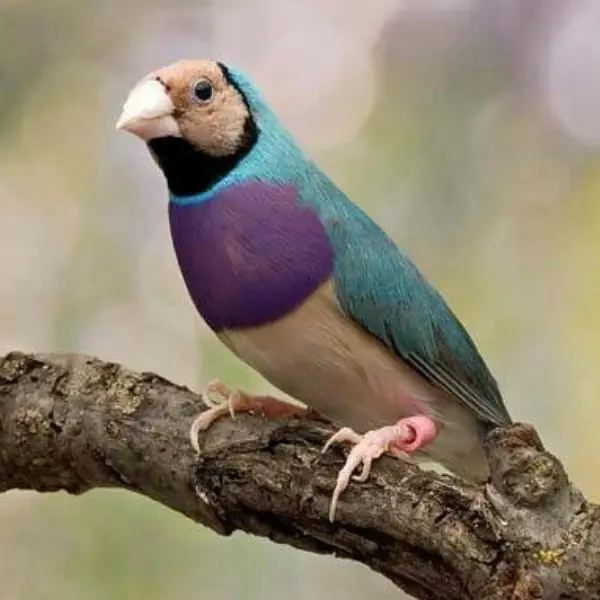Free shipping order over 20,000
Lory Parrot
₨ 112,500 Original price was: ₨ 112,500.₨ 90,000Current price is: ₨ 90,000.
-
- Scientific Name: Lorius spp. (Lories include several species within the genus Lorius and other genera within the subfamily Loriinae.)
- Size: Depending on the species, Lories range from 20 to 30 cm (8 to 12 inches) in length.
- Color: Lories are known for their vibrant and varied plumage, often featuring a dazzling array of colors. Commonly, they have a mix of bright red, green, yellow, and blue feathers, though specific patterns vary by species. The Rainbow Lory (Trichoglossus moluccanus), for example, has a red chest, green wings, and a blue head, with yellow and orange accents.
- Beak: Typically orange or reddish, strong, and slightly curved, well-suited for their specialized diet.
- Eyes: Dark brown or red, often with a bare skin patch around them.
- Legs and Feet: Grayish or pinkish, with zygodactyl toes (two toes facing forward and two backward) that allow for effective climbing and handling of food.
SKU: REF. LA-5766-10-1-1-1-1-1-1-1-1-1-1-1-1-1-1-1-1-1-1-1-1-1-1-1-1-1-1-1-2-1-1-1-1
Categories: PARROTS, Uncategorized
Tag: parrots
Share
Share on facebook
Share on email
Important Keys:
Habitat
- Distribution: Lories are native to the Australasian region, including parts of Indonesia, New Guinea, the Solomon Islands, and Australia.
- Environment: They inhabit tropical rainforests, coastal forests, and woodlands, often found in the canopy where they feed on nectar and fruits. In captivity, they require spacious aviaries with plenty of branches for climbing and exploration.
Diet
- Primary Food: Lories have a specialized diet that primarily consists of nectar and pollen from flowers. They also consume fruits, particularly those high in sugar content, like papaya and mango.
- Supplementary Food: In captivity, they can be fed commercial nectar mixes designed for Lories, along with fresh fruits and vegetables. Occasional soft fruits and vegetables can provide additional nutrients.
- Feeding Behavior: Lories have a specialized brush-tipped tongue that allows them to efficiently lap up nectar. In captivity, they benefit from a diet that mimics their natural food sources, with nectar-based mixes and plenty of fresh produce.
Breeding
- Breeding Season: Breeding can occur year-round in tropical climates, with peaks often aligning with the availability of food resources.
- Nest Location: They typically nest in tree hollows, often high in the canopy. In captivity, they use nest boxes filled with soft materials like wood shavings.
- Egg Quantity: Clutches usually consist of 2 eggs.
- Incubation Period: About 23-28 days, depending on the species.
- Fledging: Chicks fledge around 8-10 weeks after hatching.
Lifespan
- In the Wild: Typically around 10-15 years.
- In Captivity: Can live up to 20-30 years or more with proper care.
Behavior
- Social Structure: Lories are highly social and often seen in flocks. They form strong bonds with their mates and, in captivity, enjoy interaction with their human caregivers.
- Vocalization: They are known for their loud, chattering calls, which can vary from species to species. They can mimic sounds and speech, although they are more vocal than articulate.
- Personality: Lories are energetic, playful, and curious. They enjoy climbing, exploring, and engaging in interactive play. Their vibrant colors and lively behavior make them popular pets, but their specific dietary needs and active nature require attentive care.
![]()
Be the first to review “Lory Parrot” Cancel reply
Related Products
-
-13%
Blue Star Finch
₨ 23,000Original price was: ₨ 23,000.₨ 20,000Current price is: ₨ 20,000. -
-11%
Albino Shaft Tail
₨ 22,500Original price was: ₨ 22,500.₨ 20,000Current price is: ₨ 20,000. -
-25%
Silver Gouldian Finch
₨ 24,000Original price was: ₨ 24,000.₨ 18,000Current price is: ₨ 18,000. -
-43%
Blue Gouldian Finch
₨ 35,000Original price was: ₨ 35,000.₨ 20,000Current price is: ₨ 20,000. -
-13%
Gray Diamond Firetail Finch
₨ 23,000Original price was: ₨ 23,000.₨ 20,000Current price is: ₨ 20,000. -
-20%
Zebra Dove
₨ 18,750Original price was: ₨ 18,750.₨ 15,000Current price is: ₨ 15,000. -
-20%
White-tailed Dove
₨ 1,250Original price was: ₨ 1,250.₨ 1,000Current price is: ₨ 1,000. -
-20%
Diamond Pied Dove
₨ 6,250Original price was: ₨ 6,250.₨ 5,000Current price is: ₨ 5,000.
Sign Up for Exclusive Birds Care Tips and Offers from Phool Panchi
Company links
Category
Contact
© 2024 Phool Panchi | Developed By v3Studio
















Reviews
There are no reviews yet.